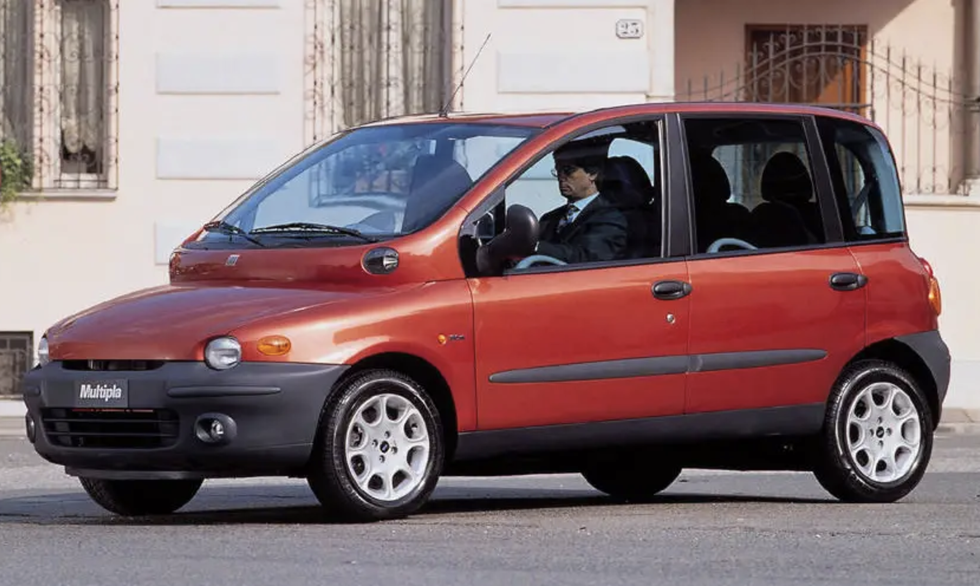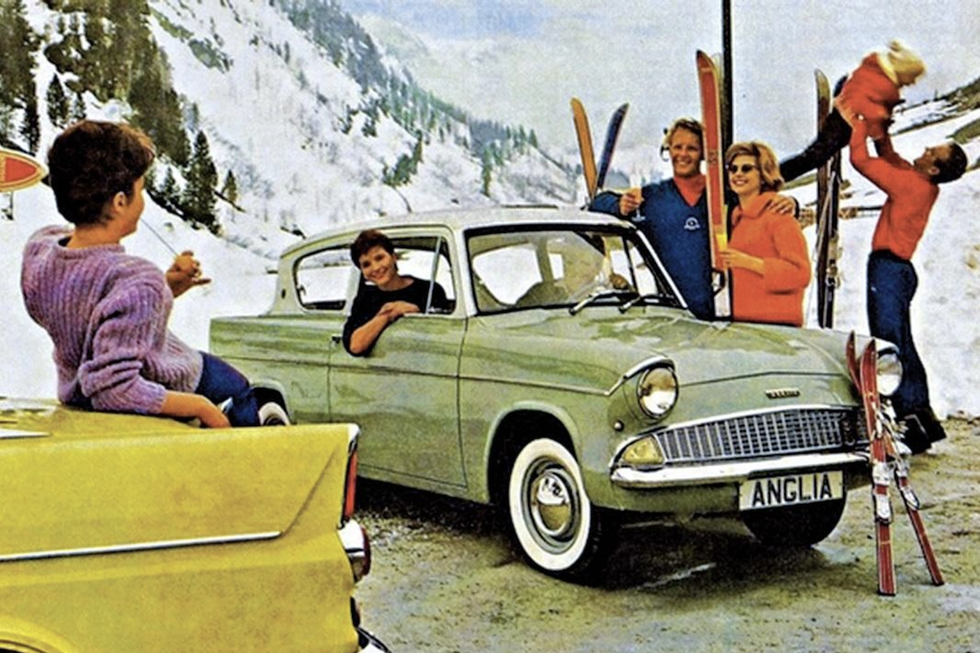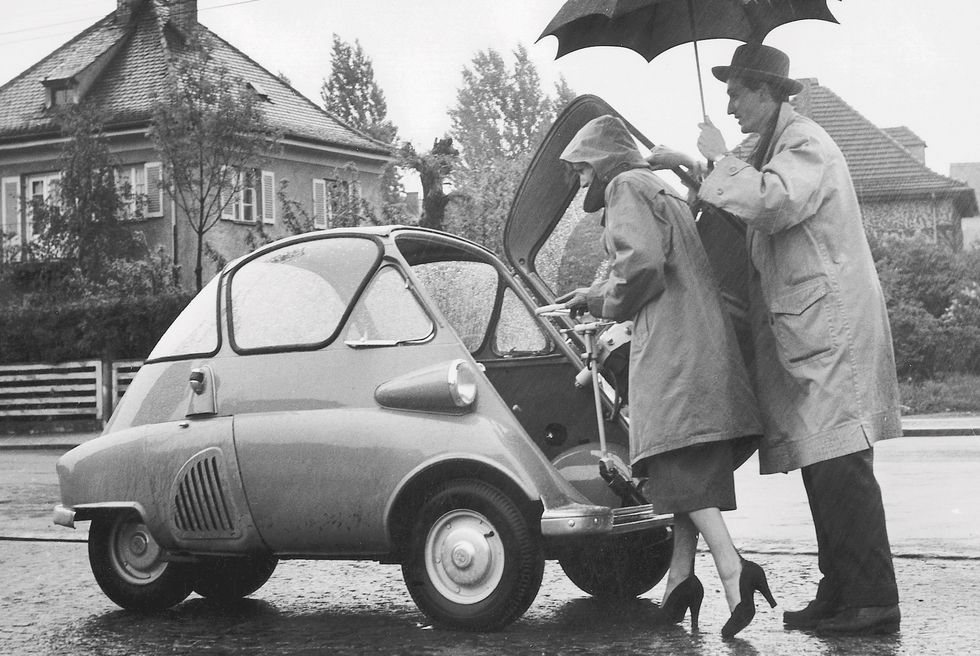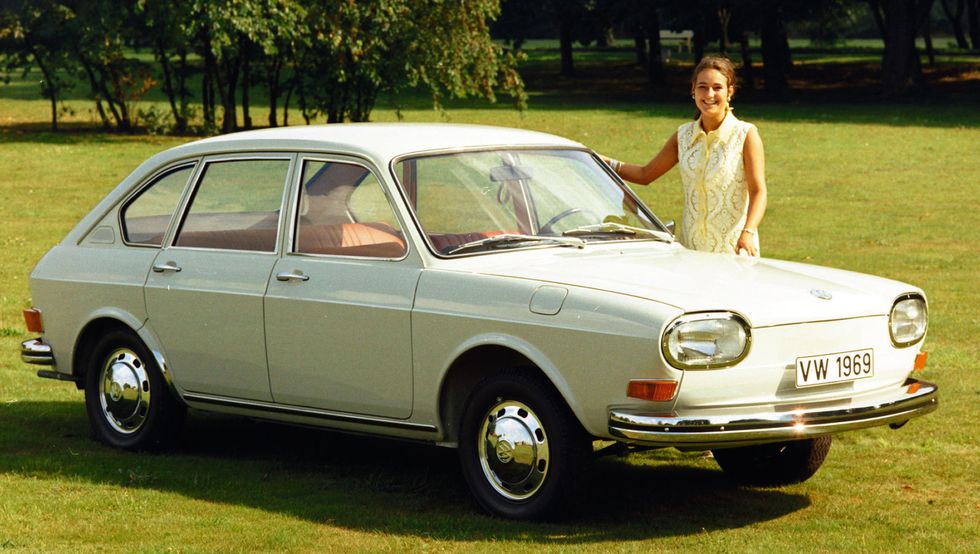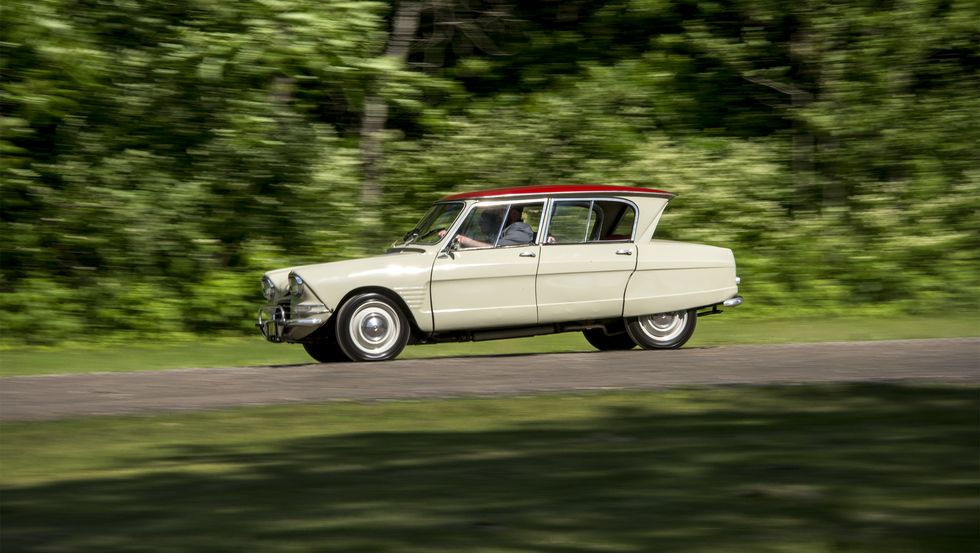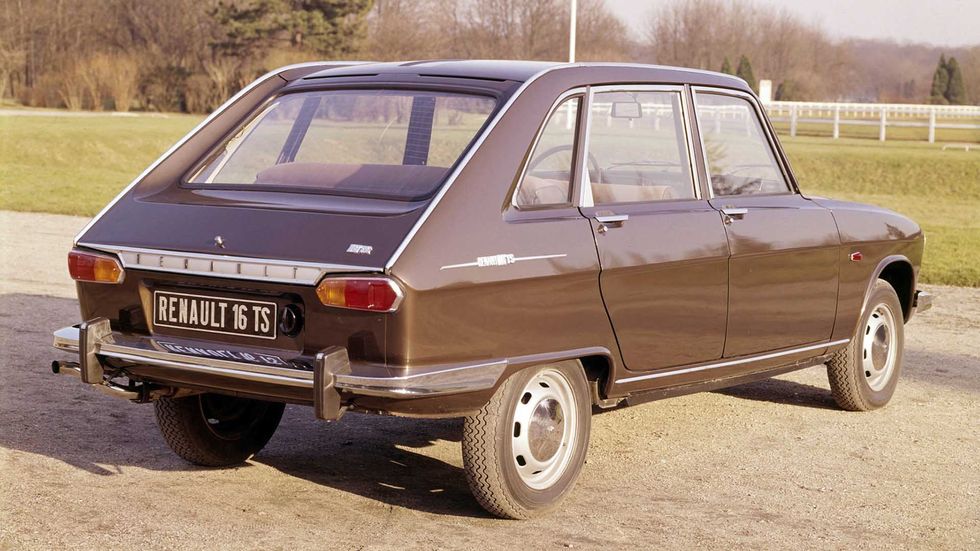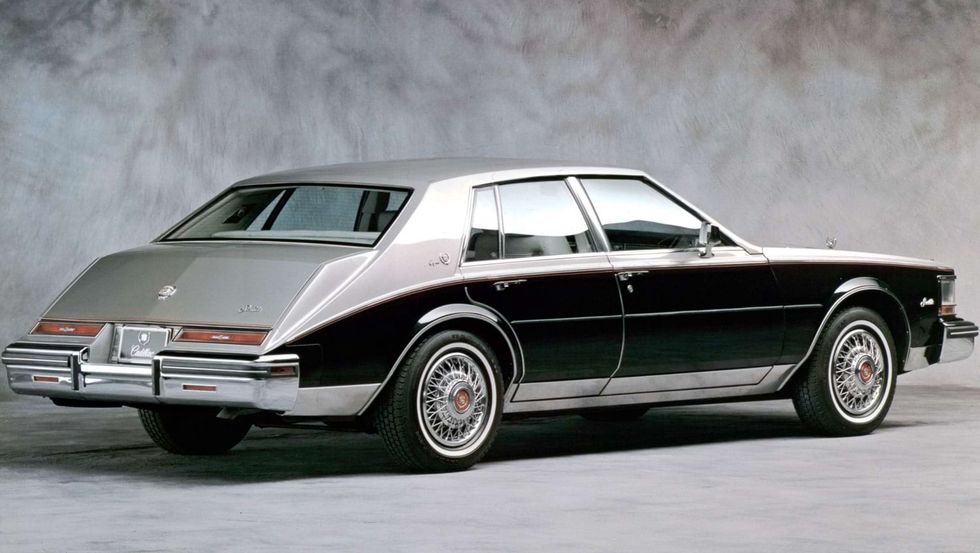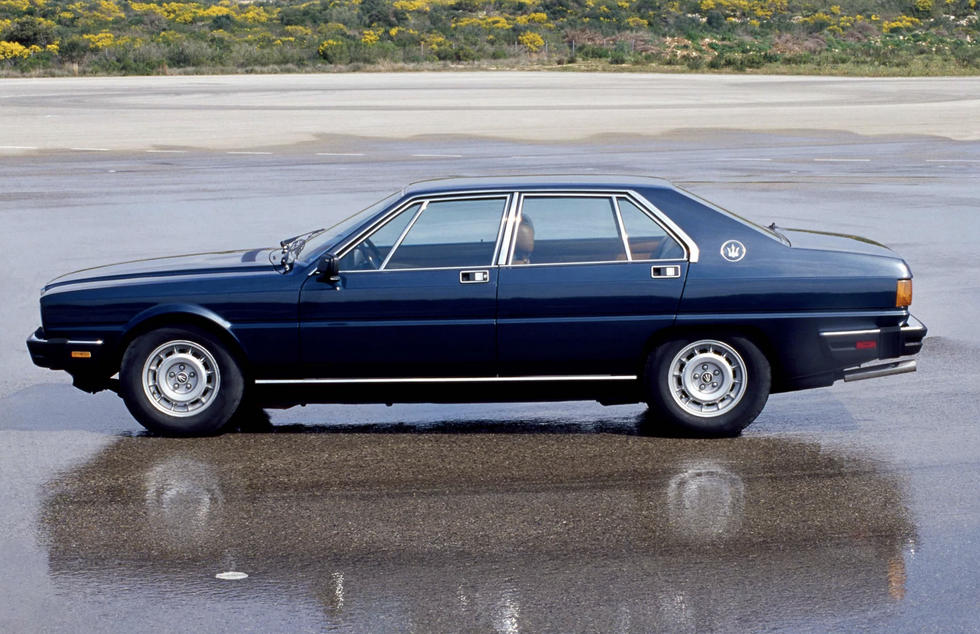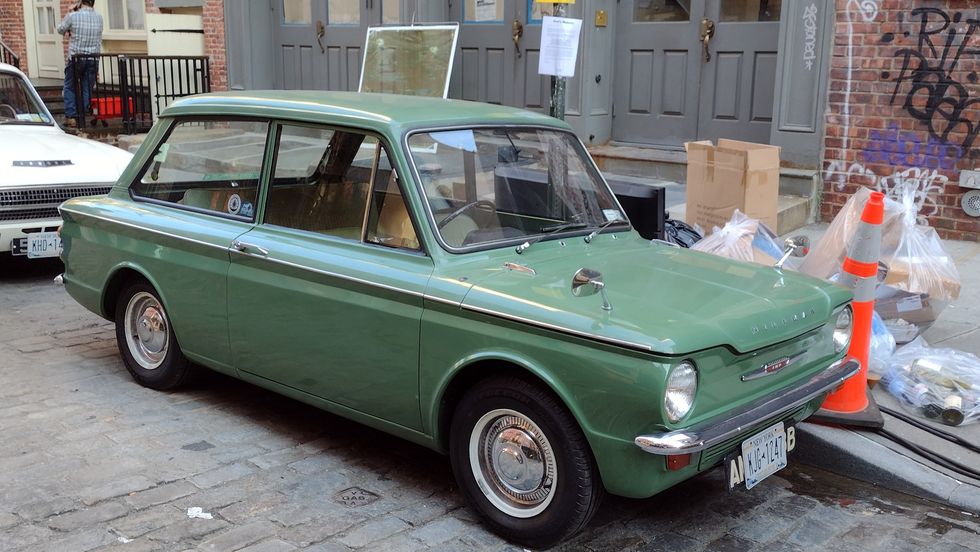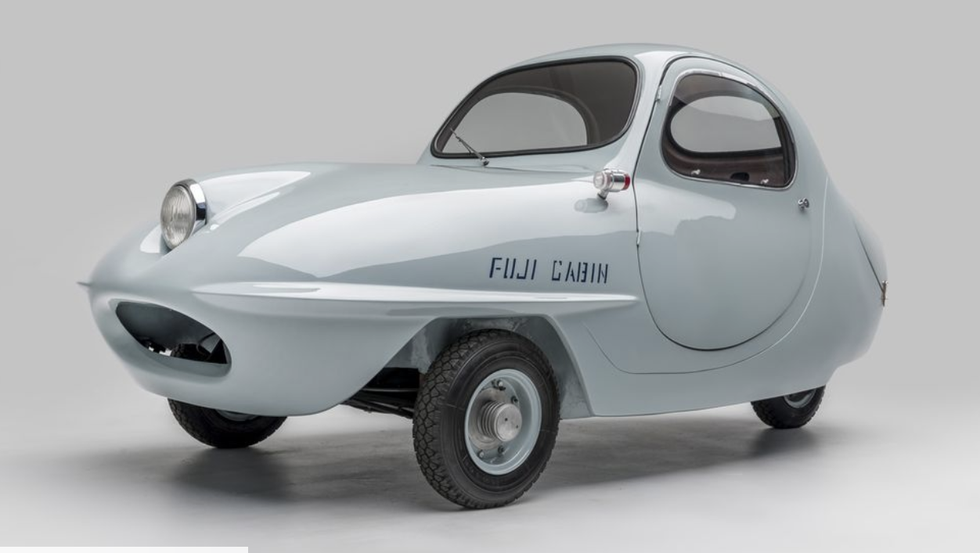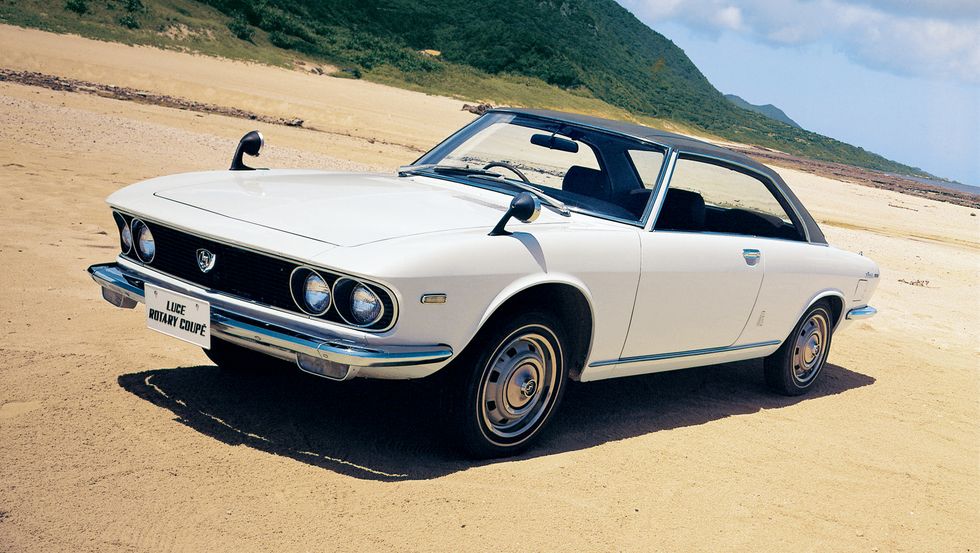Most Car and Driver readers could compile a fairly solid list of the world’s most iconic car designs. But could you stretch it to 663 entries? That’s how many are found in “The Atlas of Car Design,” a new book that takes an encyclopedic look at the subject and, in the process, spotlights many obscure or just plain scorned automobiles that aren’t typically found on a grassy concours lawn or in other compendiums of motor vehicle design.
We spoke with authors Jason Barlow and (C/D contributor) Brett Berk about some of the less-obvious vehicles they chose to include.
Brett: “This is The Atlas of Car Design, it’s not called The Atlas of Good Car Design.
“It’s oftentimes the case that when you look back on an era, there are things that are intriguing that maybe seemed disgusting at the moment. One that comes to mind immediately is the Pontiac Aztek.”
B: “A lot of people mention it as one of the ugliest cars ever made. And it certainly is quite radically ugly. But… this car was a progenitor of modern crossovers in many ways. There are quite a few vehicles like this, especially from the U.S. automakers, that showed a white space in the market but didn’t quite make it [often] because they weren’t executed that well.”
Jason: “Probably the European equivalent would be the ’99 Fiat Multipla.”
J: “There’s no doubt it breaks all the rules. Stance, proportion, graphics—it doesn’t have any of that stuff. Whenever non-automotive publications do their lists of the ugliest cars, it’s always in there.
“Are these great pieces of automotive design? In most cases, no. But they’re fantastic contributors to the automotive story. They’re interesting cars, they’re cars with a great story, they’re cars with things to say.
“Nobody needed another book about car design if it was all the typical entries, but maybe we did need something that cast the net a little wider.”
Car and Driver: The Atlas certainly does cast a wide net, spanning the globe to include vehicles from Eastern Europe, Central and South America, Australia, even the Middle East and Africa. Although it’s the UK that gives us the Vauxhall Cresta.
J: “Oh, god…. General Motors, as you know, had its outposts in Europe with Opel in Germany and Vauxhall in the UK. And Vauxhall was a very esteemed brand. I’m struggling to mount a defense of its inclusion in a book about car design, but culturally, Vauxhall is a significant brand, and it speaks to the aspirations of the emergent middle class in the 1950s and the 1960s.”
C/D: What about the Ford Anglia, which most people may know as Harry Potter’s flying car?
J: “That one has a reverse-slanted rear window, and I’m all over it for that reason. But mostly it showed the influence of American car design.”
C/D: You also include several microcars, such as the BMW Isetta.
B: “This was a moment when post-war Europe was trying to put people into cars as a means of modernizing and industrializing society and creating exports. There are all of these interesting cultural associations with these vehicles. They’re not fantastic vehicles to drive, but they are fascinating engineering and packaging solutions. And they introduce radical ideas of what constitutes a car, and we’re looking at that again now with last-mile mobility. They also speak to the resource deprivation of post-war Europe, and I think it’s worthwhile to expose people to that whole history.”
C/D: The Beetle is certainly to be expected, but not the Volkswagen 411. How did that sneak in there?
B: “Volkswagen has this one platform, and it’s a bestselling car, but it’s not a high-margin vehicle, the Beetle. So, it’s like, what can we do to push the envelope? Literally, the envelope of a vehicle that’s based on the same platform.”
C/D: From France, we’ll skip over the Citroën DS and the Facel Vega, and let’s talk instead about the Citroën Ami and the Renault 16.
J: “I think ugly is as interesting as beauty. There’s a fascination with misshapen things. The Ami was the work of Flaminio Bertone, who did the DS. So, he created what some people say is the most beautiful car and certainly a hugely influential car, but he also did the Ami. I’m as interested in why things look strange as why the Lamborghini Miura looks absolutely perfect.
“And the Renault 16 is widely credited with being the first hatchback, so that’s a reason for it there. It sort of epitomizes a French functionalism, married to comfort. Maybe not conventionally good-looking…”
C/D: Later, France produced the Renault Avantime.
J: “That was prefaced by a very cool concept car, and not for the first time, somewhere between the concept and [production], things went awry. Certainly, Renault had big trouble productionizing the Avantime—the windows didn’t work, and the doors were too big so they had to use cantilevered hinges. And for a large four-seat coupe, there was precious little space behind the driver. But I think history will record that as… well, it will probably record it as a monumental folly and an ugly car, but I love it.”
C/D: Would you put the bustle-back Cadillac Seville in that same category?
B: “There was a bustle-back Seville on Bring a Trailer this morning, and I thought, damn, that looks interesting.”
J: “I think that’s a good-looking car! I don’t think you need to be apologetic about that one. There are many, many other American cars for which you both need to offer a mea culpa.”
C/D: How about the gen-3 Maserati Quattroporte?
B: “I love the gen-3 Quattroporte! This car looks like a Jersey barrier on the outside, and then it’s all coddling on the inside. You can imagine an elite Italian businessman in the late 1970s—there were kidnappings, there were bombings—you can imagine wanting a car that looked like a bunker.”
C/D: What about cars that represent failure? The Hillman Imp entry, for instance, says, “This fascinating little car somehow also delineates the decline of the British car industry.”
B: “We also have the Ford Pinto in there and the Edsel. I talked to someone from Ford recently, and they said, ‘Why would you include the Pinto?’ It’s because this is an attempt by America to address imports, which we never really could figure out how to do properly. And, it just so happened that cost-cutters and bean-counters intentionally allowed some design flaws to exist in the vehicle because they were trying to produce it to a price point.”
J: “Is it a really spectacular piece of car design? Probably not. But the story attached to it is one of the most important in the history of the automobile.”
C/D: Can you speak to oddities like the Fuji Cabin?
B: “Some of these ideas came from people who were super-niche experts in a specific realm, stuff that we never would have had access to or known about. And so here’s another oddity from Japan that defines a moment in that market or specific need state that didn’t correlate to one that we had in the U.S. or Europe.”
C/D: A lot of Japanese cars seem to express admiration for American or European design. For instance, the Mazda Luce.
B: “There was a huge quantity of these Japanese cars that were designed by European designers: Giugiaro, Pininfarina, Bertone. There’s a history of emerging markets looking to the success of European or American design. Why is it that one car translates fluidly from one place to another? Why is it that another is a real sticking point? Why is it that another becomes compelling to a certain niche?”
J: “Frankly, you don’t need to read this book to be entertained or even to learn something. The visual evolution of car design is very apparent, particularly in the North American section, because we start with something from 1893, and we wind up with the Tesla Cybertruck. Now, what journey we’re on there, I wouldn’t like to comment. One could argue the Cybertruck is the single ugliest vehicle in the entire book.”
B: “We’re on the cusp of what could be a very significant change in what car design looks like, so it’s important to look at not just the wondrous but also the weird and the wacky and the mistakes.”
“The Atlas of Car Design” is available from Phaidon and can be purchased here.
Deputy Editor, Reviews and Features
Joe Lorio has been obsessed with cars since his Matchbox days, and he got his first subscription to Car and Driver at age 11. Joe started his career at Automobile Magazine under David E. Davis Jr., and his work has also appeared on websites including Amazon Autos, Autoblog, AutoTrader, Hagerty, Hemmings, KBB, and TrueCar.


